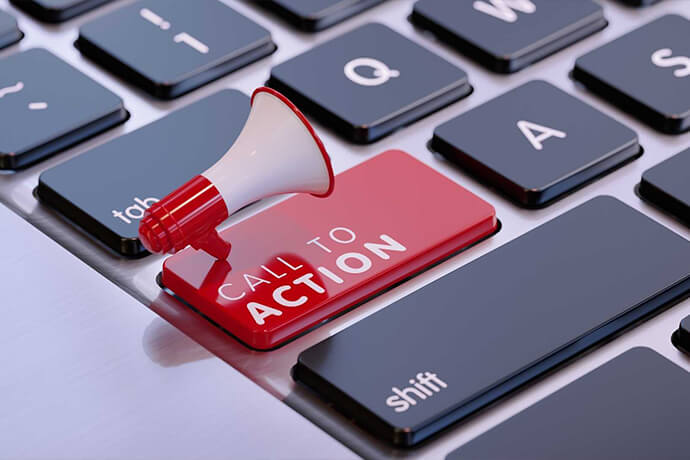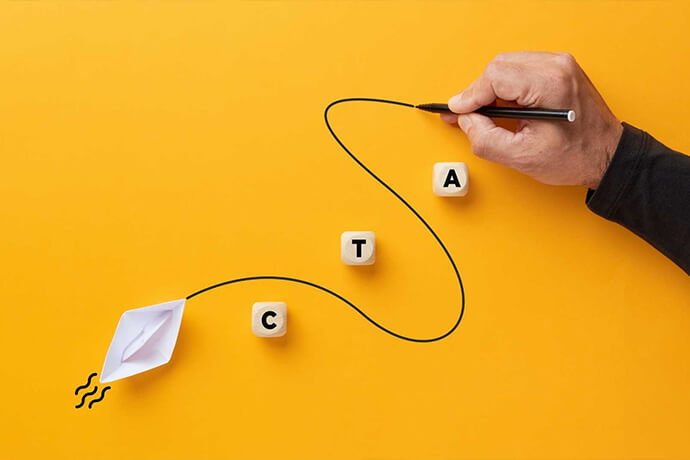 SPEAKERS
SPEAKERS
 TOPICS
TOPICS
This guide covers call to actions fundamentals such as clarity, message alignment, urgency, personalization, and assessing efficacy.

A great speech shouldn’t end when you walk off-stage! It should remain in the hearts and minds of the audience. What else should it have? Yes, a great call to action.
Welcome to our blog, where we will tell you how to add a captivating call to action in your speech. Giving a speech is a task, isn’t it? You write, practice, and polish, but still, there are times when you think you could have written it better.
Who doesn’t want to deliver a speech that gets the audience to act long after the clapping stops? It is where a powerful call to action comes in. A good call to action turns passive listening into active doing. Without further ado, let's break down how to craft a call to action that motivates and makes your speech the star of the show!
What is a Call to Action?
A call to action is the "do this next" part of a speech. After hearing your message or speech, it gives a clear understanding of what you want the audience to do. Maybe you want them to donate or volunteer or spread the word.
The call to action makes those tasks obvious. It turns listeners into doers. The CTA meaning is the tangible "do this" that comes after capturing the audience with your message. That’s the power of a call to action.
A strong call to action helps you to convert the audience from passive listeners to active participants in your cause. It transforms your speech from an informational monologue into a catalyst for change. In short, a call to action bridges your ideas and the audience's action.
Call to Action Essentials
The call to action should be crisp and clear. For this, make your call to action straightforward. I recommend you use action words like "sign up," "donate," and "share." Explain what you expect the audience to do clearly and concretely.
Next, remember to quote numbers or facts too. No doubt, measurable goals stick better than vague requests. Specific and quantifiable call-to-action words avoid confusion and doubt.
There should be no room for interpretation. It will lead to higher engagement. Your audience needs crystal clarity on the expected next steps. I would like to quote a call to action that Kelliesha White once said in his speech. It says, "Visit our website and sign up to volunteer 5 hours this month." That's the best call to action-specific and measurable.
Your call to action should seamlessly match your speech's core message. For instance, if you talked about supporting local food banks, asking for donations for another cause makes no sense. So, make sure to keep the call to action tightly connected to what you talk about.
Let me give you another example to make myself clear. If Marcus Collins gave a speech on mentoring disadvantaged youth, his call to action should involve volunteering with or donating to youth programs, not unrelated issues.
Your speech sets up the "why"; the call to action gives the tangible "how". It turns your ideas into action. Mismatched call-to-action words can diminish results. So, make sure you align your call to action with your message.
A lot of people make the mistake of just stating the call to action instead of motivating it! A great call to action should motivate the audience to contribute to the cause.
It’s good to use phrases like “act now, and you’ll get...” or something similar. Time-sensitive call-to-action works best because urgency prompts people to act right away at the moment. It’s not wrong to strike while the iron is hot. Capitalize on the energy and emotion generated by your speech.
Speaker Omar Johnson said, "Be one of the first 50 people to sign up today and get early pricing!" Incentives like discounts for immediate action also enable instant reaction when your message is fresh.
Customizable things work best; it's a fact! The same goes for CTAs. So, always customize your CTA based on your hosting audience and event. A one-size-fits-all approach won't give you the best results.
Let’s understand this more deeply. Ask yourself, are you targeting a school or company? Or maybe you want to target seniors or young activists? Once you know your target audience, tailor the call to action to fit the room for greater resonance.

It’s crucial to analyze how your CTAs are working. Feel free to stop for a while and check which type of call to action works best for you. For this, you can evaluate sign-up rates and donations after your speech.
Also, make sure you build a strategy to improve for the next CTA. Always tweak your call-to-action language for the next event.
Conclusion
An exceptional speech motivates the audience to act after it ends. A strong call to action bridges the gap between ideas and tangible steps. Therefore, use clear, concrete language and quantifiable metrics.
Align it seamlessly with your core message. Don’t forget to add urgency and incentive to prompt immediate response. With a strategic call to action, you can turn listeners into change-makers. Your speech can have a true impact beyond the stage.
Q1: What is a call to action in a speech?
A call to action tells the audience specific steps related to your message after the speech ends. It converts listeners to doers.
Q2: How do you write a compelling call to action?
Use clear action words, specifics, and quantifiable metrics. Also, connect it tightly to your speech goal. Lastly, personalize it for the audience.
Q3: What are literary techniques for the call to action?
Techniques like repetition, rhetorical questions, and imperative voice strengthen a call to action.
Q4: What is the art of persuasion speech?
Persuasive speeches use logic, emotions, stories, and rhetoric to convince audiences to believe the speaker’s message and ideas. An effective call to action is key.
